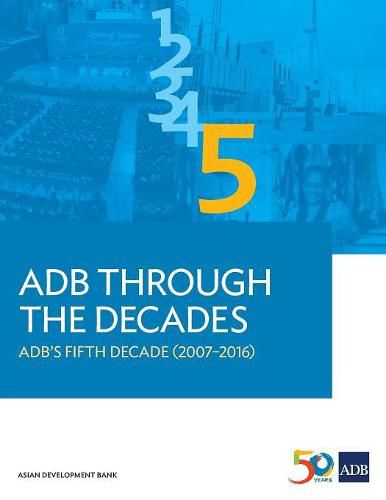Readings Newsletter
Become a Readings Member to make your shopping experience even easier.
Sign in or sign up for free!
You’re not far away from qualifying for FREE standard shipping within Australia
You’ve qualified for FREE standard shipping within Australia
The cart is loading…






This title is printed to order. This book may have been self-published. If so, we cannot guarantee the quality of the content. In the main most books will have gone through the editing process however some may not. We therefore suggest that you be aware of this before ordering this book. If in doubt check either the author or publisher’s details as we are unable to accept any returns unless they are faulty. Please contact us if you have any questions.
The 5-volume publication, ADB through the Decades, provides a historical account of how ADB has evolved to respond to the dynamic changes across the Asia and Pacific region over the past 5 decades. This fifth volume from the series presents ADB’s response to intensified development challenges, a more ambitious global development agenda, and the emergence of new sources of development finance. Asia proved resilient to the effects of the 2008-2009 global financial crisis, but sustaining rapid growth became more difficult afterward. Development challenges intensified, the global development agenda became more ambitious, and new sources of development finance emerged. This volume shows how ADB continued to reform to meet these challenges. A new long-term strategic framework, Strategy 2020, was launched in 2008, to respond to the changing needs of the region. A midterm review of Strategy 2020 was released in 2014, further refining and adjusting priorities in order for ADB to remain relevant and responsive to borrowers. Various organizational changes were introduced, internal business processes were improved, and several new instruments were adopted as part of ADB’s efforts to become stronger, better, faster. ADB’s lending capacity expanded significantly, with the fifth general capital increase in 2009, followed by the unique and groundbreaking combination of the Asian Development Fund portfolio with the ordinary capital resources balance sheet approved in 2015.
$9.00 standard shipping within Australia
FREE standard shipping within Australia for orders over $100.00
Express & International shipping calculated at checkout
This title is printed to order. This book may have been self-published. If so, we cannot guarantee the quality of the content. In the main most books will have gone through the editing process however some may not. We therefore suggest that you be aware of this before ordering this book. If in doubt check either the author or publisher’s details as we are unable to accept any returns unless they are faulty. Please contact us if you have any questions.
The 5-volume publication, ADB through the Decades, provides a historical account of how ADB has evolved to respond to the dynamic changes across the Asia and Pacific region over the past 5 decades. This fifth volume from the series presents ADB’s response to intensified development challenges, a more ambitious global development agenda, and the emergence of new sources of development finance. Asia proved resilient to the effects of the 2008-2009 global financial crisis, but sustaining rapid growth became more difficult afterward. Development challenges intensified, the global development agenda became more ambitious, and new sources of development finance emerged. This volume shows how ADB continued to reform to meet these challenges. A new long-term strategic framework, Strategy 2020, was launched in 2008, to respond to the changing needs of the region. A midterm review of Strategy 2020 was released in 2014, further refining and adjusting priorities in order for ADB to remain relevant and responsive to borrowers. Various organizational changes were introduced, internal business processes were improved, and several new instruments were adopted as part of ADB’s efforts to become stronger, better, faster. ADB’s lending capacity expanded significantly, with the fifth general capital increase in 2009, followed by the unique and groundbreaking combination of the Asian Development Fund portfolio with the ordinary capital resources balance sheet approved in 2015.